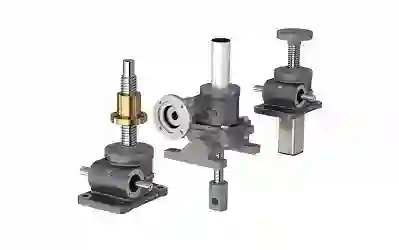Screw jacks, the workhorses of linear motion, come in a variety of shapes and sizes. But with great power comes great responsibility! Selecting a screw jack with the appropriate load capacity is paramount for safety, efficiency, and maximizing the lifespan of your equipment. Here’s why load capacity is king and how to choose the right jack for the job:
The Dangers of Overload:
- Safety Hazard: Exceeding a screw jack’s load capacity is a recipe for disaster. The jack could become stressed, bend, or even break, potentially leading to injuries or equipment damage.
- Reduced Efficiency: An overloaded jack struggles to perform. Friction increases, wear accelerates, and performance deteriorates. This translates to wasted energy and a shortened lifespan for the jack.
- Premature Failure: Operating a screw jack beyond its limits significantly increases the risk of premature failure. This can lead to costly repairs, downtime, and potential delays in your project.
Understanding Load Capacity Ratings:
- Static vs. Dynamic Loads: The load capacity rating typically refers to the static load, which is the weight the jack can support in a stationary position. Dynamic loads, encountered during lifting or lowering, can be higher due to acceleration forces. Factor in these dynamic loads when selecting a jack.
- Safety Factor: Don’t operate a jack at its absolute maximum capacity. Always incorporate a safety factor by choosing a jack with a load capacity exceeding the weight you intend to lift or push. A common safety factor is 1.5, meaning the jack’s capacity should be 1.5 times the intended load.
Calculating Your Required Load Capacity:
- Weight of the Object: This is the most basic factor. Ensure the jack’s capacity comfortably exceeds the weight of the object you need to lift or push.
- Additional Forces: Consider any additional forces acting on the object, such as wind resistance or friction. Factor these forces into your load calculation to ensure the jack has sufficient capacity.
- Future Needs: If you anticipate lifting heavier objects in the future, consider a jack with a higher capacity to accommodate potential growth.
Beyond the Basics:
- Duty Cycle: The frequency and duration of lifting or pushing operations also play a role. For continuous or heavy-duty applications, consider jacks designed for such workloads.
- Environmental Factors: Extreme temperatures, dust, or moisture can impact load capacity. Consult the manufacturer’s specifications to ensure the chosen jack is suitable for your operating environment.
Conclusion:
Selecting a screw jack with the appropriate load capacity is not just about lifting heavy objects; it’s about safety, efficiency, and getting the most out of your investment. By carefully considering the factors mentioned above, you can choose the perfect screw jack for your application, ensuring a smooth, safe, and long-lasting operation. Remember, when it comes to load capacity, always prioritize going above and beyond the minimum required weight!

